The NBA’s annual deadline for rookie scale contract extensions passed on Monday, officially bringing the extension period for 2019 first-round picks to an end. In total, 11 players eligible for rookie scale extensions signed new contracts this year, which matched a record set last year.
We’ve seen a noticeable uptick in rookie scale extensions in recent years, with at least 10 such deals completed in each of the last three offseasons. Prior to 2020, the last time as many as 10 rookie scale extensions were signed in a single league year was back in 2006, when players like LeBron James, Carmelo Anthony, Dwyane Wade, and Chris Bosh were signing their second NBA contracts.
Here’s a breakdown of the 11 rookie scale extensions signed before this year’s deadline, sorted by total value. In cases where we haven’t yet seen the official contract terms for the extension, we’re basing our figures on the latest reports and will update these numbers as necessary. These deals will go into effect beginning in 2023/24:
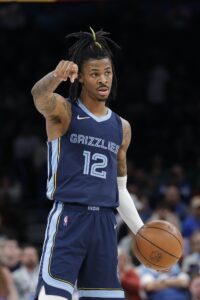 Ja Morant (Grizzlies): Five years, maximum salary (story). Projected value of $194,300,000. Projected value can increase to $233,160,000 if Morant meets Rose Rule criteria. Includes 15% trade kicker.
Ja Morant (Grizzlies): Five years, maximum salary (story). Projected value of $194,300,000. Projected value can increase to $233,160,000 if Morant meets Rose Rule criteria. Includes 15% trade kicker.- Darius Garland (Cavaliers): Five year, maximum salary (story). Projected value of $194,300,000. Projected value can increase to $233,160,000 if Garland meets Rose Rule criteria. Includes 15% trade kicker.
- Zion Williamson (Pelicans): Five years, maximum salary (story). Projected value of $194,300,000. Projected value can increase to $233,160,000 if Williamson meets Rose Rule criteria.
- Note: Williamson’s salary guarantees in the final four years of the extension could be adjusted downward if he doesn’t meet certain games-played thresholds.
- Note: Williamson’s salary guarantees in the final four years of the extension could be adjusted downward if he doesn’t meet certain games-played thresholds.
- Jordan Poole (Warriors): Four years, $123,000,000 (base value) (story). Includes $17MM in incentives.
- Tyler Herro (Heat): Four years, $120,000,000 (base value) (story). Includes $10MM in incentives.
- RJ Barrett (Knicks): Four years, $107,000,000 (base value) (story). Includes $13MM in incentives.
- De’Andre Hunter (Hawks): Four years, $90,000,000 (base value) (story). Includes $5MM in incentives.
- Keldon Johnson (Spurs): Four years, $74,000,000 (base value) (story). Includes $6MM in incentives.
- Kevin Porter Jr. (Rockets): Four years, $63,440,000 (base value) (story). Only first year is fully guaranteed. Includes fourth-year team option and $19,032,000 in incentives.
- Brandon Clarke (Grizzlies): Four years, $50,000,000 (base value) (story). Includes $2MM in incentives.
- Nassir Little (Trail Blazers): Four years, $28,000,000 (story).
A couple of these extensions were no-brainers — there was never any doubt that Morant was going to get maximum-salary offer from the Grizzlies as early as possible, for instance.
Of the three maximum-salary deals, Williamson’s was the most interesting, given his injury history and the frequent speculation about his commitment to New Orleans. He and the Pelicans shut down that speculation by reaching a lucrative long-term agreement very early in July.
Interestingly, seven of this year’s eight non-max rookie scale extensions include incentives, giving the teams some level of protection if their newly extended youngsters don’t continue taking significant steps forward.
The Rockets‘ deal with Porter is the most extreme example of a high-variance, incentive-laden deal — as Mark Berman of Fox 26 Houston tweets, team-based incentives can push the value of that contract beyond $20MM per year, but the base value is just $15.86MM annually, and only the first season is fully guaranteed.
Little’s new contract with the Trail Blazers is another fascinating agreement. We’ve seen Grayson Allen (2021) and Taurean Prince (2019) accept two-year rookie scale extensions in recent years that were worth less overall than Little’s $28MM deal, but Little’s $7MM average annual salary is the lowest for a rookie scale extension since Jeremy Lamb signed a three-year, $21MM deal in 2015.
With 11 players signing rookie scale extensions, that left 13 players who were eligible for a new deal and didn’t get one (a 14th, Ty Jerome, was waived by the Rockets during the offseason).
Here’s that list of those players, who are now eligible to become restricted free agents during the 2023 offseason, assuming they finish their current contracts:
- Nickeil Alexander-Walker (Jazz)
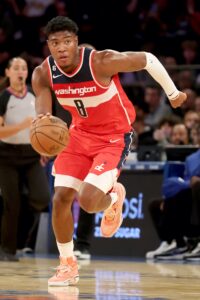
- Darius Bazley (Thunder)
- Goga Bitadze (Pacers)
- Rui Hachimura (Wizards)
- Jaxson Hayes (Pelicans)
- Cameron Johnson (Suns)
- Romeo Langford (Spurs)
- Cam Reddish (Knicks)
- Matisse Thybulle (Sixers)
- P.J. Washington (Hornets)
- Coby White (Bulls)
- Grant Williams (Celtics)
- Dylan Windler (Cavaliers)
For a second consecutive year, the most noteworthy extension candidate not to sign a new deal is a Sun. After not extending Deandre Ayton in 2021, Phoenix opted not to lock up Johnson before he becomes eligible for restricted free agency next summer. Unlike Ayton, Johnson wasn’t seeking a maximum-salary contract, but his price tag could certainly increase substantially in the coming months as he enters the Suns‘ starting lineup in place of Jae Crowder.
Washington and Williams are among the other notable extension candidates who didn’t get new deals and could be targets for lucrative offer sheets in July of 2023. Hachimura, Hayes, Thybulle, and White are a few of the players who could set themselves up for nice paydays next offseason if they take a step forward in 2022/23.
The rest of these players in this group weren’t serious extension candidates. Some – including Langford and Windler – appear unlikely to receive qualifying offers next offseason to make them RFAs unless they show a lot more than they have in their first three NBA seasons.
Finally, it’s worth mentioning that there were five players selected in the first round of the 2019 draft who weren’t eligible at all for rookie scale extensions entering this offseason, for various reasons. Those players are as follows:
- Jarrett Culver: Fourth-year option declined by Grizzlies in 2021.
- Sekou Doumbouya: Waived by Rockets in 2021.
- Mfiondu Kabengele: Third-year option declined by Clippers in 2020.
- Chuma Okeke: Signed rookie scale contract in 2020; on track to be extension-eligible in 2023.
- Luka Samanic: Waived by Spurs in 2021.
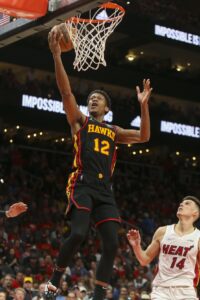
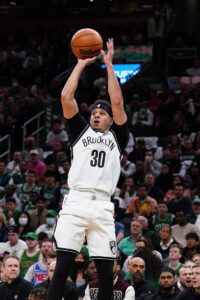 Let’s use the Nets as an example.
Let’s use the Nets as an example. 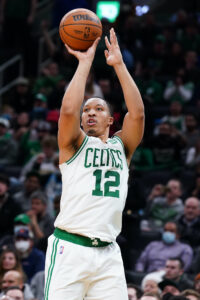 In 2020/21, Williams’ second season, he made progress as a shooter, a very important aspect of his role for Boston. His averages – 4.7 PPG and 2.8 RPG on .437/.372/.588 shooting (.546 true) in 63 games (18.1 MPG) – were still fairly modest, but the 12.2% increase in three-point percentage was encouraging.
In 2020/21, Williams’ second season, he made progress as a shooter, a very important aspect of his role for Boston. His averages – 4.7 PPG and 2.8 RPG on .437/.372/.588 shooting (.546 true) in 63 games (18.1 MPG) – were still fairly modest, but the 12.2% increase in three-point percentage was encouraging.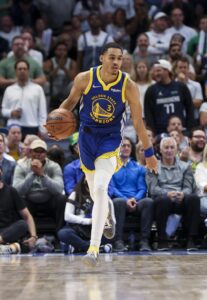 Every player in this group has shown enough to warrant a multiyear commitment and an eight-figure annual salary.
Every player in this group has shown enough to warrant a multiyear commitment and an eight-figure annual salary.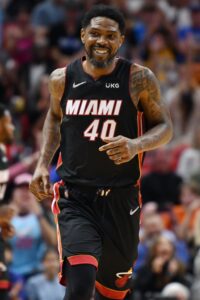 Haslem’s teammate
Haslem’s teammate 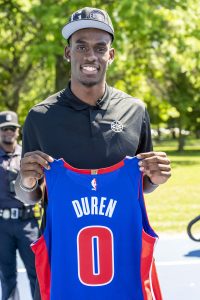 The only team with multiple players on the list of the NBA’s 10 youngest players is San Antonio — the Spurs actually have three players on the list and just missed a fourth, as rookie
The only team with multiple players on the list of the NBA’s 10 youngest players is San Antonio — the Spurs actually have three players on the list and just missed a fourth, as rookie 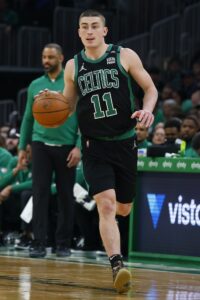
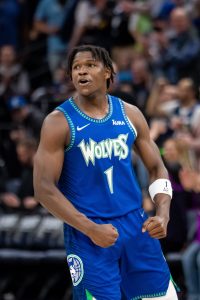
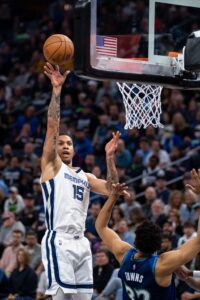 Clarke made an immediate impact in year one, earning a spot on the All-Rookie First Team after averaging 12.1 PPG and 5.9 RPG while shooting 61.8% from the floor and 75.9% from the line in 58 games (22.4 MPG). He even showed the ability to space the floor at times, though on very low volume: he converted 35.9% of his 64 three-point attempts on the season.
Clarke made an immediate impact in year one, earning a spot on the All-Rookie First Team after averaging 12.1 PPG and 5.9 RPG while shooting 61.8% from the floor and 75.9% from the line in 58 games (22.4 MPG). He even showed the ability to space the floor at times, though on very low volume: he converted 35.9% of his 64 three-point attempts on the season.